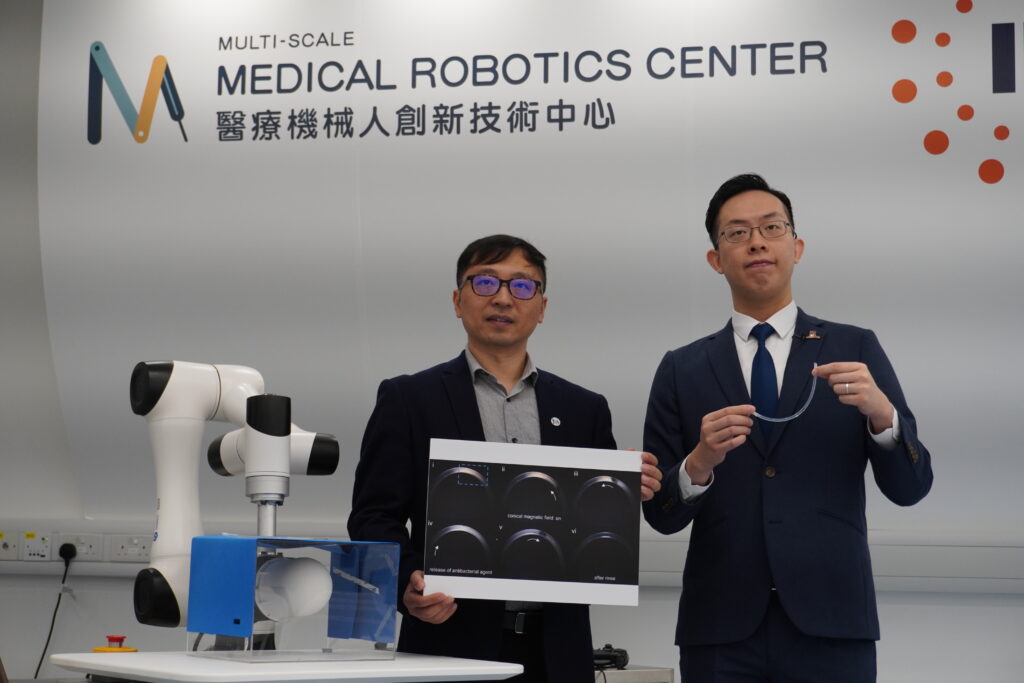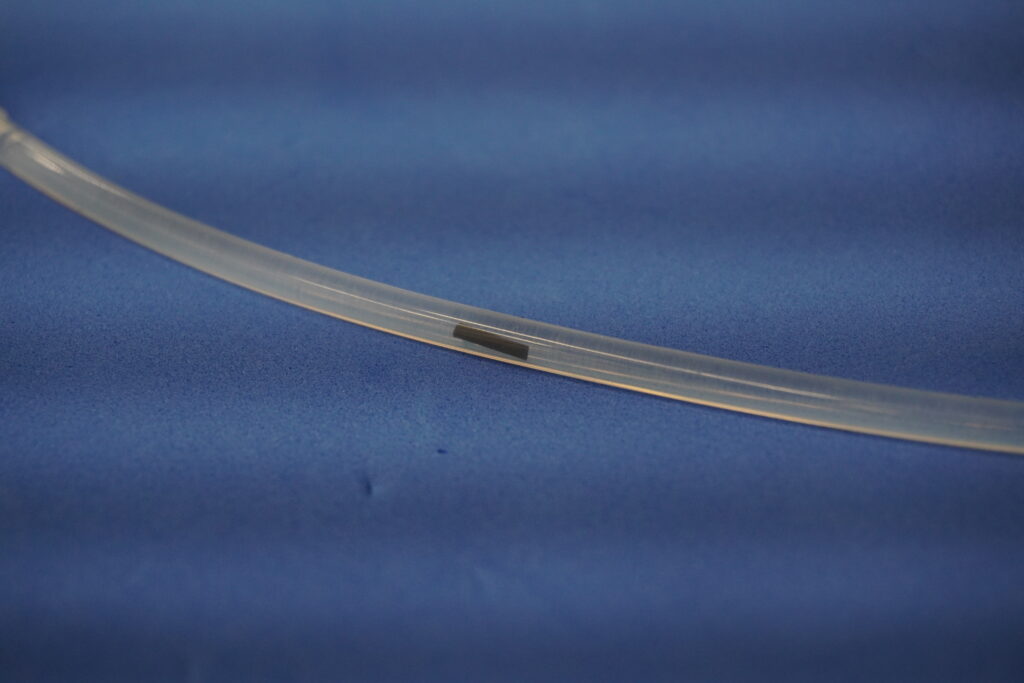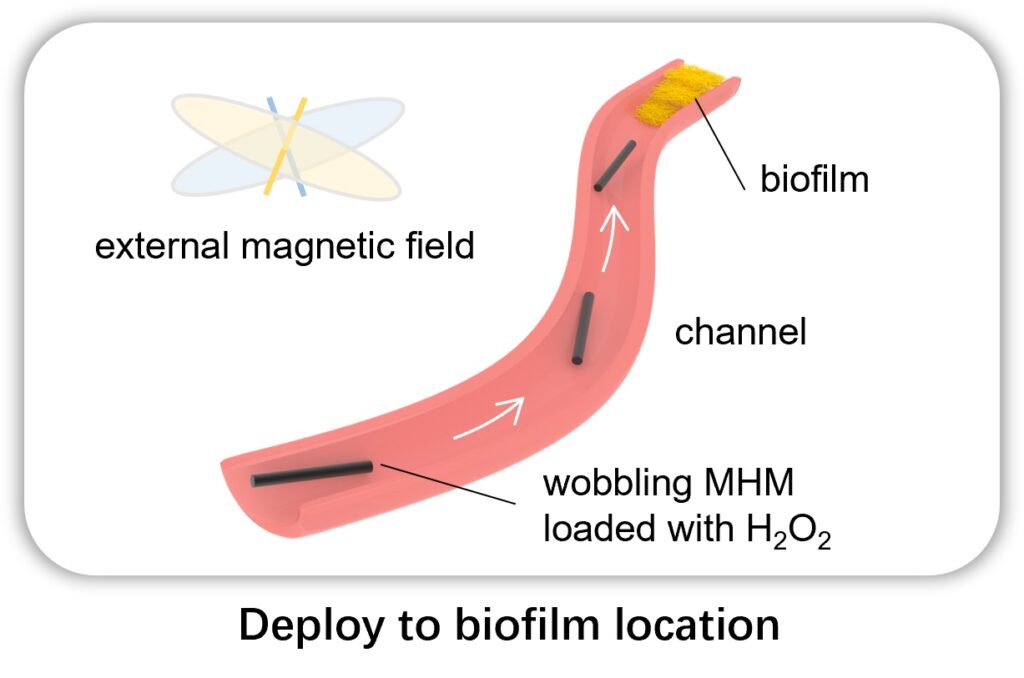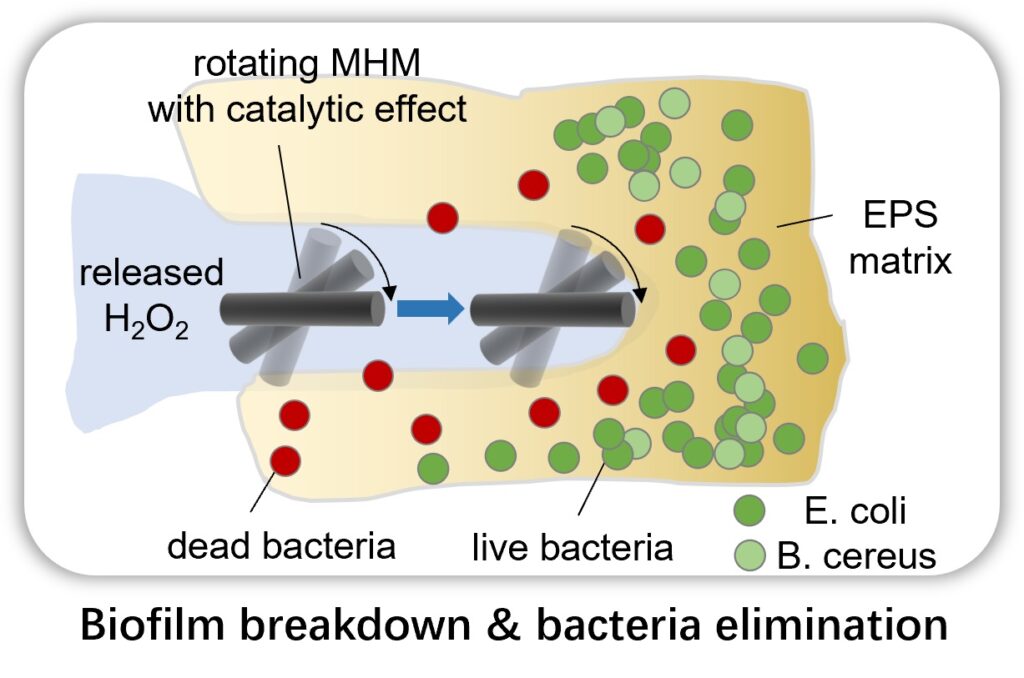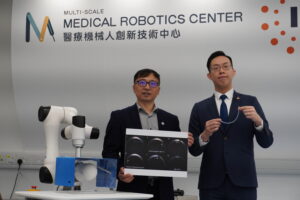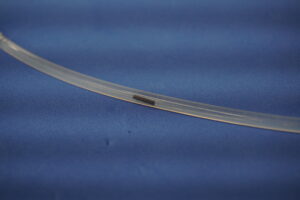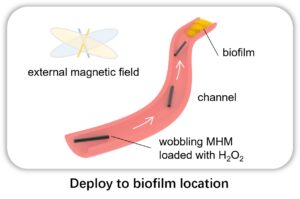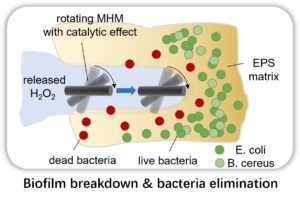CUHK
News Centre
CUHK develops magnetic hydrogel micromachines with on-demand reactive oxygen species release for anti-biofilm treatment
A Chinese University of Hong Kong (CUHK) collaborative research team achieved a breakthrough in magnetic microrobots. The team, led by Professor Zhang Li from the Department of Mechanical and Automation Engineering in CUHK’s Faculty of Engineering, has developed magnetic hydrogel micromachines that can combat biofilm within small tubular medical implants. Featuring new on-demand reactive oxygen species (ROS) releasing technology, the micromachines open up the possibility of applying the treatment to a broader range of body parts, especially hard-to-reach regions deep inside the body. The findings have been published in the scientific journal Advanced Intelligent Systems and highlighted in Advanced Science News.
Biofilm infection in medical implants is difficult to tackle
Biofilms are slimy films composed of microorganisms and the substances produced by them. They act as a physical barrier that protects the bacteria from antibiotics, making it difficult to completely eliminate them. Biofilms can grow on various surfaces, including medical implants such as artificial tubes inserted into the human body during treatment. Unlike body organs, which are protected by the immune system, antibiotic implants are prone to the growth of biofilms.
Medical implants are often located in hard-to-reach locations in the human body, creating challenges for effective treatment of biofilm infections. Antibiotics used to be effective means to treat microbial infections, but the emergence of antibiotic-resistant bacteria and the overuse of antibiotics in recent years has made it necessary to develop new approaches to treat microbial infections without using them.
Micromachines that are designed for tiny tubular structures
The magnetic hydrogel micromachines are designed to disrupt the biofilm mechanically and to control the release of antibacterial agents to inactivate the bacteria. Professor Zhang explained, “The microrobotic platform we have developed can navigate the magnetic micromachine to the desired location with external magnetic fields. The mechanical force induced by the micromachines can break up biofilms physically and the chemical agents released locally can treat the biofilm more effectively.”
Professor Tony Chan Kai-fung, Research Assistant Professor of the Chow Yuk Ho Technology Centre for Innovative Medicine in CUHK’s Faculty of Medicine, added, “The previously developed helical microrobot was designed to be used in ear tubes. The current design of the magnetic hydrogel micromachines is a long shape, with the capability of controlled ROS delivery in a localised region. We tested the micromachine for the eradication of Escherichia coli and Bacillus cereus biofilms in curved and tiny tubes, which simulate the narrow lumens in the body like the implants and catheters used in medical treatments.”
“The micromachines may be applied to biofilm treatments for a wider range of body regions, including biliary stents and urinary catheters for urinary tract diseases. It is also possible to use micromachines for targeted drug delivery in the tiny and tortuous lumens inside the human body.”
Drug loading and on-demand release function
The micromachines contain tiny hydrogel compartments inside them that are able to store antibacterial agents. When the soft, wet, biocompatible hydrogel is heated above its lower critical solution temperature of about 32°C, it expels the liquid it carries, making it a great candidate for various biomedical applications.
Professor Zhang explained, “Thermosensitive hydrogel has been widely investigated as a carrier for controlled drug release. Previously, our team conducted a study that incorporated iron particles into the thermosensitive hydrogel to make it responsive to an external magnetic field. We then further utilised this to construct the magnetic micromachine to fight biofilms.
“The magnetic hydrogel carries hydrogen peroxide solution, which acts as an antibacterial agent in the procedures.” Professor Chan added, “The new drug loading function, combined with mechanical disruption, reduces the amount of antibacterial agents used to treat the biofilm and ensures effective treatment. Besides, the controlled release of hydrogen peroxide in a localised region also minimises the impact on surrounding healthy tissues, as well as the side effects of the treatment.”
Professor Zhang said, “We are now discussing suitable, significant application scenarios with our medical partners, and planning for further animal experiments with the microrobotic technology. At the same time, we are working on human-scale magnetic actuation systems compatible with clinical imaging modalities for clinical application in patients. In addition, we are also working with non-medical collaborators and industrial partners to apply microrobots to environmental and industrial applications.”


